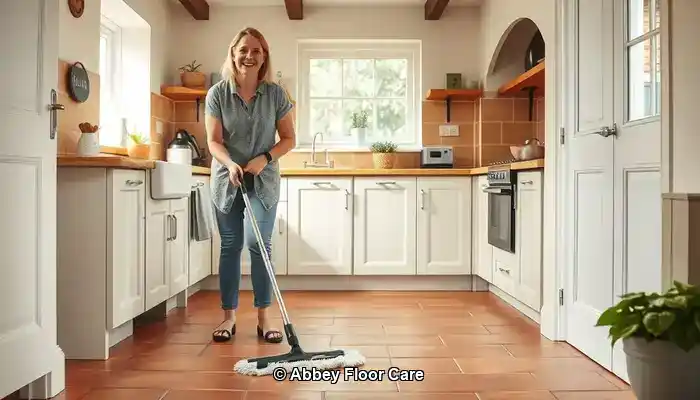
Last Updated on September 29, 2025 by David
Proven Strategies for Keeping Your Terracotta Floors Spotlessly Clean
-
- <b>Terracotta</b> is inherently porous, making it especially susceptible to rapid dirt buildup, particularly in humid regions like <a href="https://ad4sc.com/deep-cleaning-slate-floors-top-product-in-surrey/">Surrey</a>.
- <b>Effective sealing</b> is vital to prevent moisture and dirt from penetrating the tile surface.
- Consistent maintenance is crucial—daily sweeping paired with weekly mopping using pH-neutral cleaners helps maintain the tile’s aesthetic appeal.
- Steer clear of harsh chemicals and steam mops, as these can compromise the sealant and harm the tile surface.
- <a href=”https://www.abbeyfloorcare.co.uk/home-garden/can-you-recommend-the-safest-products-for-cleaning-sandstone/”>Choose environmentally-friendly products</a>, particularly in homes with pets or small children.
- Hiring professional restoration services ensures comprehensive cleaning and resealing for lasting protection.
- Strategically placed rugs and mats in high-traffic areas can significantly reduce dirt transfer.
- <b>Effectively managing moisture</b> is essential—ensuring proper ventilation and promptly cleaning up spills can help prevent staining and mould growth.
Understanding the Factors Behind Rapid Dirt Accumulation on Terracotta Floors
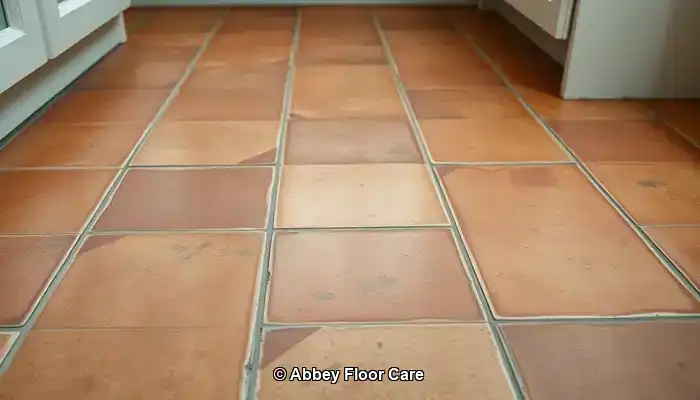
Terracotta tiles are an attractive flooring option, especially in traditional or rustic homes throughout Surrey. Their warm tones and organic textures add depth to any space. However, despite their aesthetic appeal, terracotta is notorious for its tendency to accumulate dirt quickly. Understanding the underlying causes is essential for effective cleaning and ongoing maintenance to ensure the longevity of these beautiful tiles.
Expert Recommendations for Daily Care of Terracotta Floors
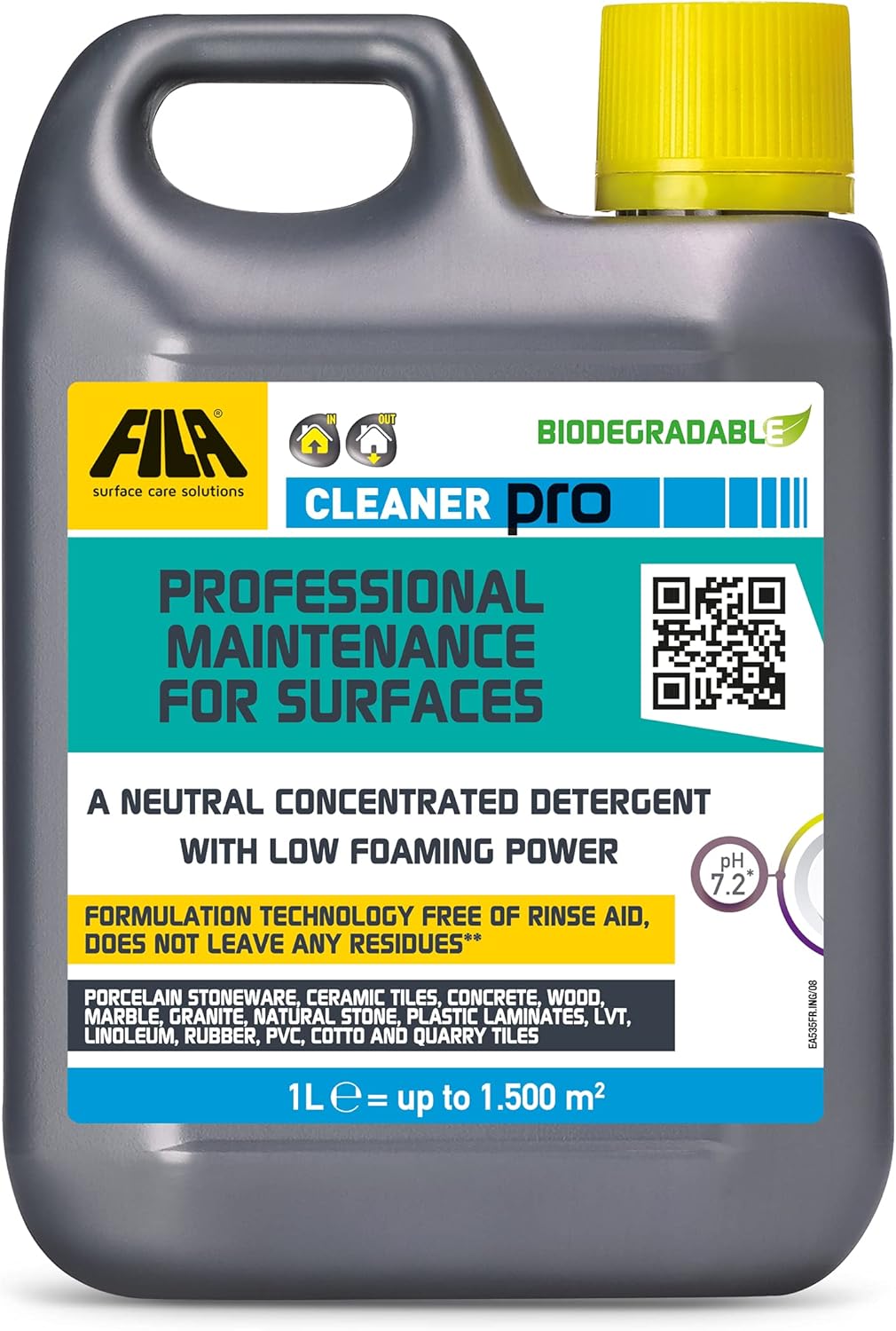
Fila Pro Floor Cleaner
|
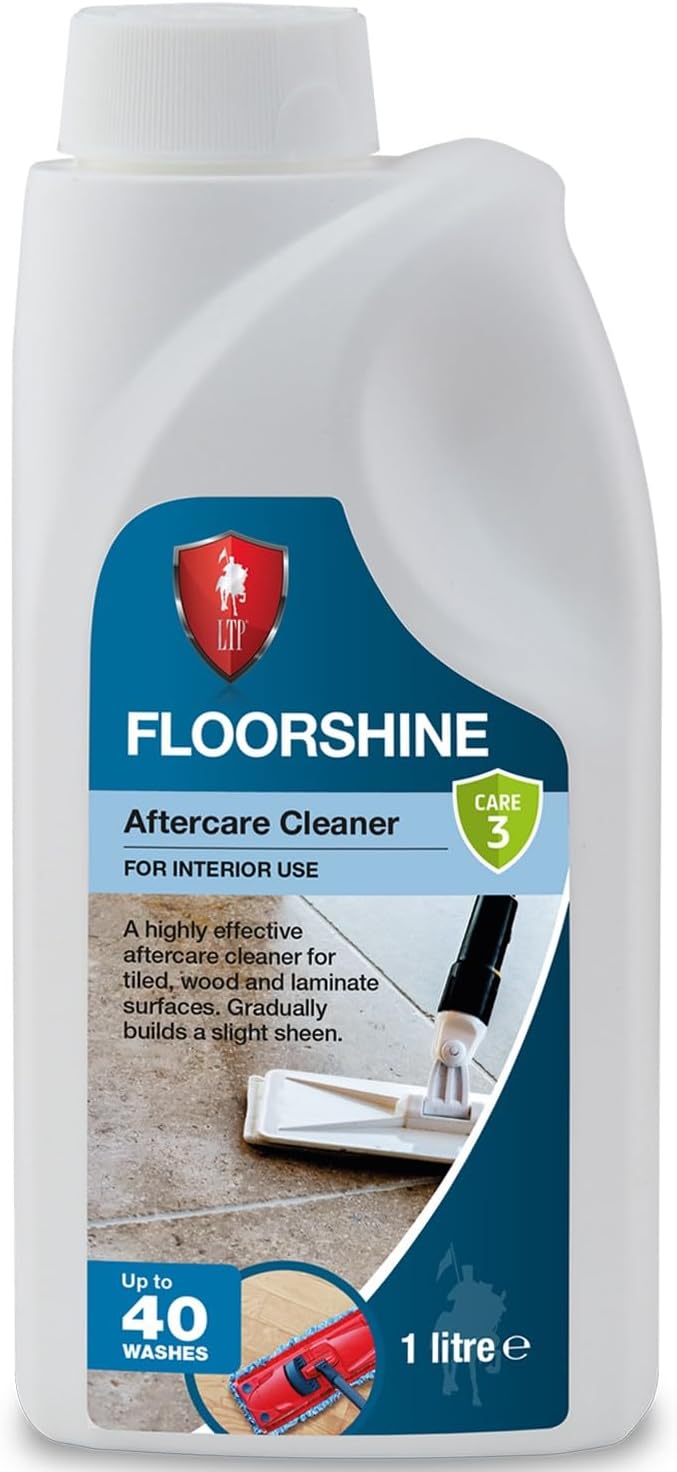
LTP Floorshine
|
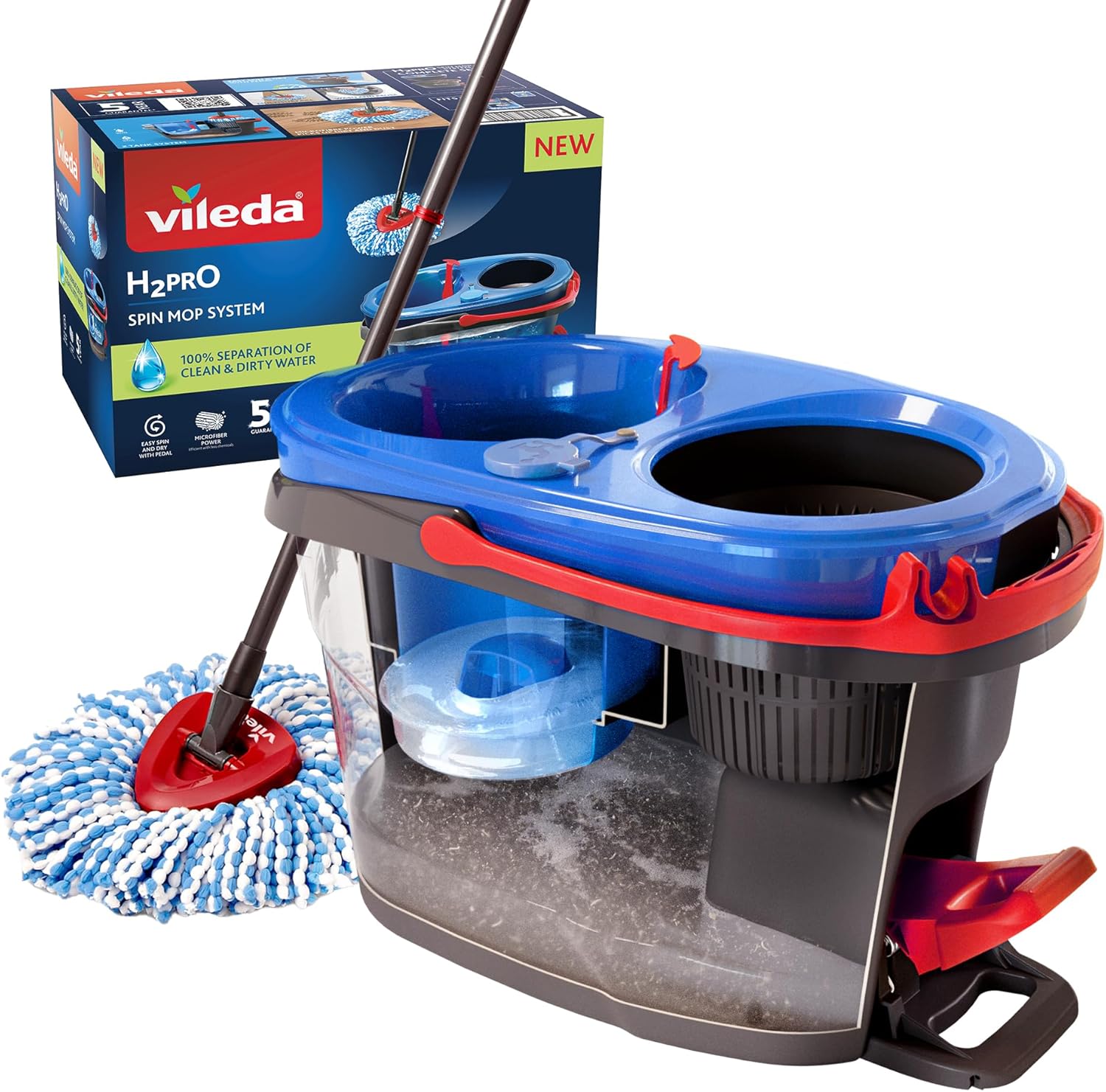
Vileda H2PrO Spin Mop System
|
Exploring Terracotta’s Porous Nature: Why It Absorbs Dirt So Quickly
Terracotta is made from natural clay and is fired at lower temperatures compared to other tile materials. This manufacturing process creates a porous surface, enabling it to absorb moisture, oils, and dirt much like a sponge. In everyday use, this porosity allows grime to penetrate deeply into the tile, making removal with standard cleaning methods more challenging.
Unsealed terracotta is particularly vulnerable to staining. Without a protective layer, even minor spills or muddy footprints can leave lasting marks. Over time, this results in a dull and stained appearance, which can be difficult to restore without professional assistance.
How Surrey’s Weather Influences Dirt Accumulation on Terracotta Tiles
The climate in Surrey plays a significant role in how rapidly terracotta floors get dirty. The region’s frequent rainfall and high humidity levels contribute to increased moisture being tracked indoors, especially in entryways and conservatories.
Homes located near wooded areas or gardens face even greater challenges. Soil, pollen, and organic debris can easily infiltrate terracotta surfaces, particularly if shoes are not removed before entering the house.
Everyday Habits That Accelerate Dirt Buildup on Terracotta Floors
In addition to environmental factors, daily routines can worsen the situation. The use of inappropriate cleaning products—such as acidic solutions or bleach—can strip away protective coatings and harm the tile’s surface. While steam mops are popular for their convenience, they often force moisture deeper into the tile, worsening the problem.
High-traffic areas, such as kitchens and hallways, naturally experience more wear and tear. If regular sweeping and mopping are overlooked, dirt accumulates quickly and embeds itself into the tile’s texture.
Proven Approaches for Sustaining Clean Terracotta Floors
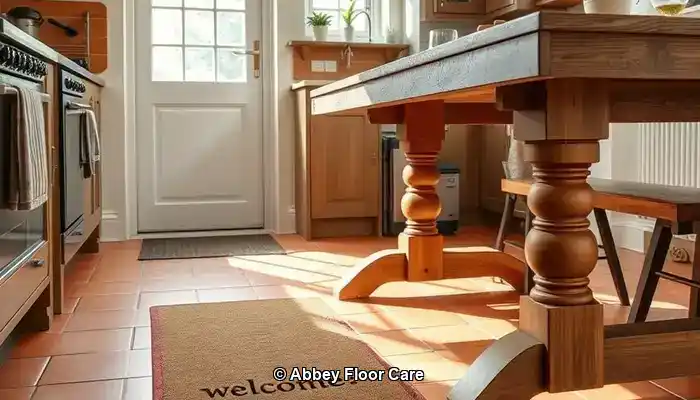
Maintaining immaculate terracotta floors requires not only addressing existing dirt but also implementing proactive measures to prevent new dirt from settling in. In homes across Surrey, where damp conditions and garden traffic are common, an effective maintenance strategy is crucial for preserving the natural beauty of terracotta tiles.
Sealing: Your First Line of Defence Against Dirt and Stains
The best way to prevent terracotta from becoming dirty quickly is to apply a suitable sealant. A high-quality, breathable sealant forms a protective barrier that repels moisture, oils, and dirt. In Surrey properties, where humidity levels fluctuate, sealing the tiles helps to slow down water absorption, which can lead to staining and mould growth.
Experts recommend resealing terracotta every 12 to 18 months, depending on foot traffic and moisture exposure. In heavily trafficked areas like kitchens, hallways, and conservatories—where daily activity is frequent—more frequent resealing may be necessary. It is essential to select a sealant specifically formulated for porous stone and to avoid glossy finishes that could trap dirt on the surface.
Thoughtful Placement of Rugs and Mats: A Simple Yet Effective Solution
Strategically placing rugs and mats can significantly reduce the amount of dirt that reaches your terracotta tiles. Utilize heavy-duty doormats at entrances to capture mud and moisture before they can enter your home. In high-traffic areas such as hallways or under dining tables, area rugs act as protective barriers that shield the tile from wear and tear.
In rooms that lead outside, consider using washable runners that can be cleaned frequently. These not only help protect the tiles but also add warmth and style to your living area.
Proactive Moisture Management in Homes Across Surrey
Given Surrey’s reputation for rain and humidity, taking proactive steps is crucial to minimizing dirt buildup on terracotta. Employing dehumidifiers in enclosed spaces and ensuring proper ventilation throughout your home are vital measures. Quickly cleaning up spills and avoiding leaving damp items—like shoes or towels—on the floor can also help maintain cleanliness.
If your terracotta flooring is in a conservatory or garden room, consider using blinds or UV filters to reduce condensation and sun damage. These small adjustments can greatly extend the life of your tiles.
By combining proper sealing, thoughtful design choices, and effective moisture management, homeowners in Surrey can significantly slow the rate at which terracotta floors gather dirt. The following segment will discuss the best cleaning practices to keep your floors looking fresh and natural day after day.
Best Practices for Cleaning Terracotta Tiles
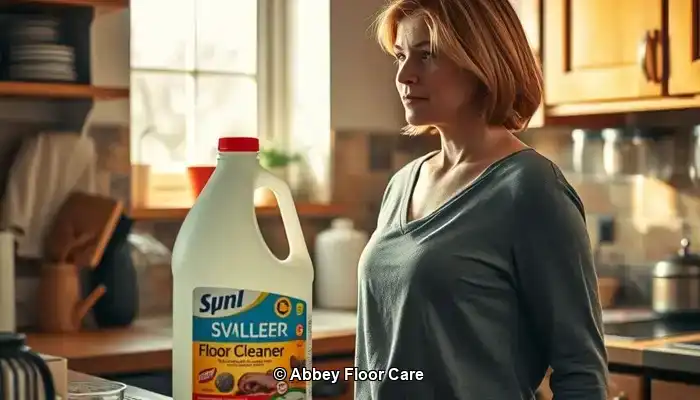
Even with effective sealing and preventative measures in place, terracotta floors require regular care to maintain their natural beauty. The key lies in using the right techniques and products that clean effectively without damaging the tile’s porous surface.
Establishing a Consistent Daily and Weekly Cleaning Routine
In Surrey homes, where outdoor elements often enter, daily sweeping or vacuuming is essential. Use a soft-bristle broom or a vacuum designed for hard floors to remove dust, grit, and organic debris before it settles into the tile.
For weekly cleaning, mop the floor with warm water and a pH-neutral cleaner specifically formulated for natural stone. Avoid soaking the floor; damp mopping is the most effective approach. Excess moisture can seep into the tile and cause staining or mould growth, especially in older or inadequately sealed installations.
Choosing the Right Cleaning Products for Terracotta Maintenance
Select cleaning products that are gentle yet effective. Look for labels that indicate “stone-safe,” “non-acidic,” or “pH-neutral.” In Surrey, where eco-conscious living is increasingly valued, many homeowners prefer biodegradable cleaners that are safe for both pets and children.
Steer clear of multi-surface cleaners containing bleach, ammonia, or citrus extracts, as these chemicals can degrade sealants and etch the terracotta, making it more prone to future staining.
For stubborn stains, use a soft cloth with a diluted stone cleaner solution. Avoid scrubbing with abrasive pads or wire brushes, as these can scratch the surface and complicate future cleaning efforts.
Cleaning Techniques to Avoid for Terracotta Tiles
While steam mops may seem convenient, they are not suitable for terracotta. The high heat and moisture can penetrate the tile, weakening the sealant and causing long-term damage. Similarly, acidic cleaners like vinegar or lemon juice—even when diluted—can erode the tile’s surface and cause discolouration.
Stick to gentle cleaning methods, and always test new products on a small, inconspicuous area before applying them across the entire floor.
Evaluating the Pros and Cons of Professional Care vs. DIY Maintenance for Terracotta
In the realm of terracotta floor maintenance, many homeowners in Surrey start with DIY strategies. While routine sweeping and mopping can be helpful, there comes a point when professional assistance becomes not only beneficial but essential.
When is it Time to Consult a Surrey-Based Tile Specialist?
If your terracotta tiles show signs of deep staining, uneven coloration, or surface wear, it may be time to consider seeking professional assistance. Tile care specialists in Surrey use advanced equipment and stone-safe products that penetrate deeper than typical household cleaners. They can also assess whether your sealant has deteriorated and provide tailored recommendations for resealing based on your home’s unique conditions.
Restoration services typically include deep cleaning, stain removal, and reapplication of breathable sealants that protect without altering the natural appearance of the tile. For older homes or heritage properties, specialists can even replicate the original finish to maintain authenticity.
Cost-Benefit Analysis of Professional Care for Terracotta
While DIY cleaning may seem more cost-effective at first, it often results in only short-term solutions. Without adequate sealing and deep cleaning, dirt continues to accumulate, leading to the need for more frequent maintenance and the risk of permanent damage.
On the other hand, professional care can significantly extend the lifespan of your terracotta floors. A single restoration session can rejuvenate color, remove embedded dirt, and protect the surface for months or even years. In high-traffic areas like kitchens or hallways, this investment proves invaluable by reducing ongoing maintenance needs and enhancing visual appeal.
Homeowners in Surrey who prioritize long-term property upkeep and curb appeal often find that expert services provide peace of mind and superior results. Additionally, many local providers offer eco-friendly options and personalized maintenance plans to fit your lifestyle.
Eco-Conscious and Safe Cleaning Solutions for Terracotta Floors
The natural beauty of terracotta deserves care that aligns with environmental sustainability. For homeowners in Surrey who want to maintain clean floors without compromising health or ecological standards, eco-friendly cleaning solutions represent an excellent choice. Thankfully, modern products and techniques make it easy to protect your tiles—and your household—without resorting to harsh chemicals.
Choosing Non-Toxic Sealants and Cleaning Solutions
Traditional sealants often contain solvents that emit volatile organic compounds (VOCs), which can linger in the air and adversely affect indoor air quality. Fortunately, today’s eco-friendly alternatives utilize water-based formulas that have low VOC levels and are safe for children and pets.
When selecting a cleaner, look for labels that indicate “biodegradable,” “plant-based,” or “stone-safe.” These products are specifically designed to remove dirt without damaging the porous surface of terracotta. Brands specializing in natural stone care often offer concentrated solutions that can be diluted for everyday use, reducing waste and packaging.
Safe Cleaning Alternatives for Households with Pets and Kids
In busy homes throughout Surrey, safety is as important as cleanliness. Avoid bleach, ammonia, and acidic cleaners like vinegar, which can harm the tile and pose risks to pets and small children. Instead, choose gentle formulas made from coconut oil derivatives, citrus enzymes, or mineral-based ingredients.
For those who prefer DIY cleaning, a simple mixture of warm water and a few drops of castile soap can be surprisingly effective for light cleaning tasks. Just be sure to test any homemade mixture on a small area first to confirm it does not affect the sealant or finish.
Adopting Sustainable Cleaning Practices
Embracing eco-friendly care goes beyond simply selecting products—it also involves the habits we cultivate. Use reusable microfiber cloths and mops instead of disposable cleaning pads. Regular sweeping can decrease the need for frequent wet cleaning. When resealing, choose products with recyclable packaging and minimal environmental impact.
Many floor care professionals in Surrey now provide green cleaning packages, using certified non-toxic products and sustainable methods. If you’re unsure where to start, scheduling a consultation with a local expert can help you devise a routine that is both effective and environmentally friendly.
Ensuring Your Terracotta Floors Stay in Immaculate Condition
Terracotta flooring adds warmth, character, and timeless elegance to homes in Surrey; however, its porous nature requires careful maintenance to keep it clean and vibrant. By understanding why terracotta becomes dirty quickly, applying proper sealing, and adopting smart cleaning habits, you can greatly reduce grime accumulation and extend the lifespan of your tiles.
Whether you manage a busy family or are restoring a historic property, consistency is key. Regular sweeping, using pH-neutral cleaners, and seasonal resealing all play a vital role in maintaining a visually appealing appearance. When stains or wear begin to appear, don’t hesitate to reach out to a local specialist for professional restoration.
Utilizing eco-friendly products and safe cleaning practices ensures your floors remain beautiful without compromising your health or the environment. With the right approach, terracotta can continue to be a stunning feature in your home for many years ahead.
Are you ready to protect your floors the smart way? Contact us today for customized professional terracotta maintenance tailored to the unique conditions of Surrey. Let’s work together to ensure your home looks its best—naturally.
Frequently Asked Questions About Terracotta Care
Terracotta floors are both classic and beautiful, yet they come with specific care requirements. Below are answers to some of the most commonly asked questions by homeowners in Surrey looking to keep their tiles clean, protected, and visually appealing.
How Often Should I Reseal My Terracotta Tiles?
In most Surrey homes, terracotta should be resealed every 12 to 18 months. However, this timeframe may vary based on foot traffic, moisture exposure, and whether the tiles are indoors or outdoors. Areas like kitchens, hallways, and conservatories may require more frequent resealing. If your tiles begin to absorb water or appear dull, it’s time to reseal.
Is Vinegar or Bleach Safe for Cleaning Terracotta?
No—vinegar, bleach, and other acidic or harsh cleaners can damage terracotta. These substances degrade sealants and etch the tile’s surface, leading to irreversible discolouration. Always use pH-neutral, stone-safe cleaners formulated specifically for porous flooring.
What Type of Mop Works Best for Terracotta Floors?
A microfiber mop is the optimal choice. It captures dust and dirt without scratching the surface and uses minimal water, which is crucial for porous tiles like terracotta. Avoid sponge mops or steam mops, as they may oversaturate the tile and weaken the sealant.
Are DIY Cleaning Solutions Safe to Use on Terracotta?
Yes, but with caution. A mild mixture of warm water and castile soap can be effective for light cleaning tasks. Always test any homemade solution on a small, hidden area first. Avoid anything acidic or abrasive, and never apply homemade cleaners on unsealed tiles.
What Should I Do If My Tiles Are Already Stained?
If stains have become embedded, professional restoration is the most effective solution. Tile care specialists in Surrey can provide deep cleaning, remove embedded dirt, and reseal the surface, restoring the tile’s original color and texture. DIY methods could make the damage worse if inappropriate products are used.
The Article Tired of Dirty Terracotta? How to Keep It Clean Longer first found on https://www.abbeyfloorcare.co.uk
The Article Keeping Terracotta Clean: Tips for Lasting Freshness appeared first on https://fabritec.org
The Article Terracotta Cleaning Tips for Long-Lasting Freshness Was Found On https://limitsofstrategy.com
The Article Terracotta Cleaning Tips for Lasting Freshness and Shine First Appeared ON
: https://ad4sc.com
No responses yet